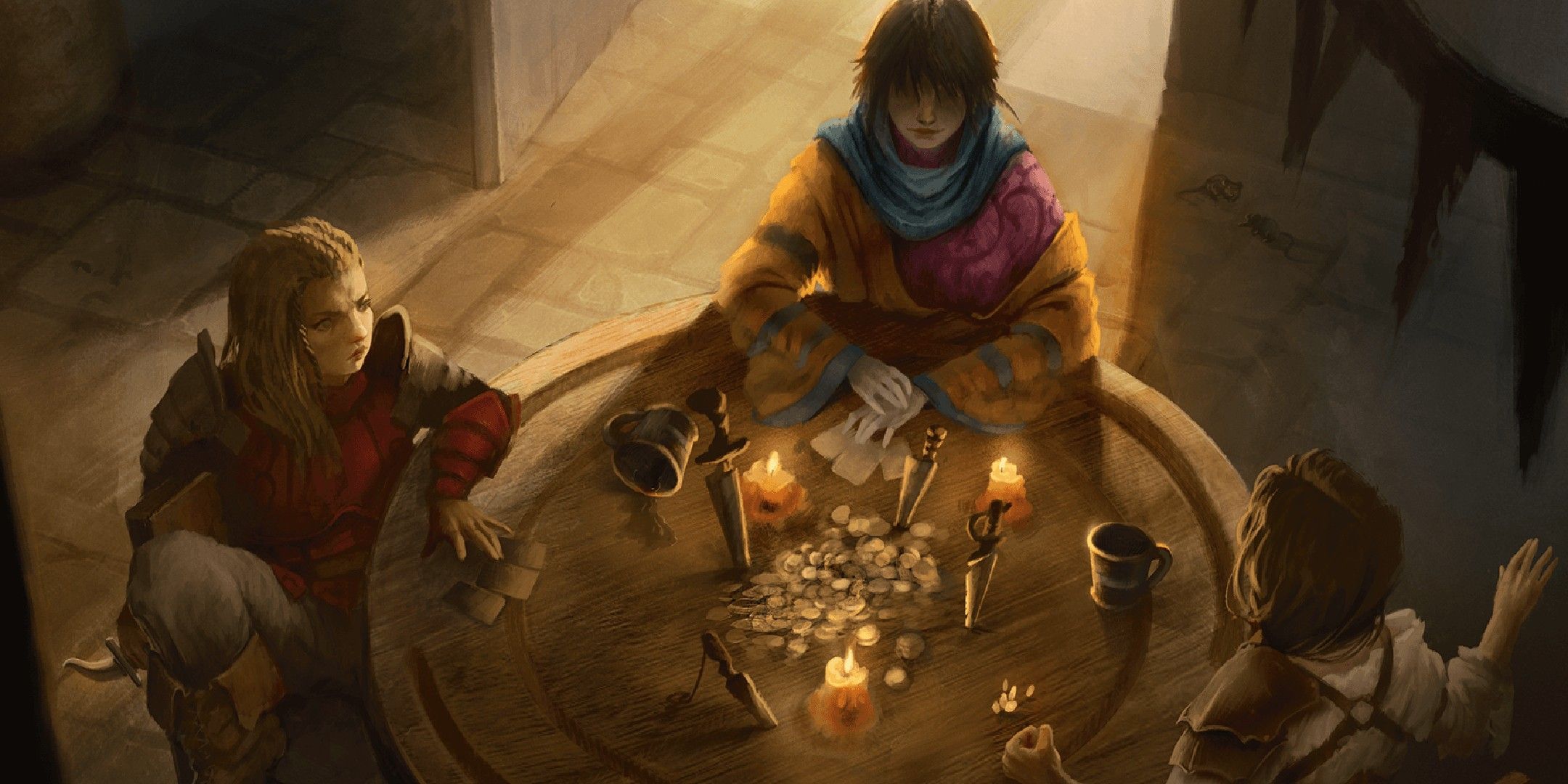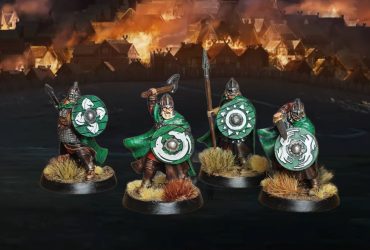Key Takeaways
- Namazu, Bubak, Nguruvilu, Aker, Psoglav, Calygreyhound, Manananggal, Red Ghost, and Suanni offer rich storytelling opportunities.
- Include these mythical creatures in D&D campaigns for unique challenges, lore depth, and memorable encounters.
- From Japan to the USA, each creature brings distinct cultural mythologies and potential for exciting adventures.
Dungeons & Dragons (D&D) is a treasure trove of creatures from mythology, folklore, and the depths of the Dungeon Master’s (DM’s) creativity. Each campaign introduces players to a rich tapestry of monsters and beings drawn from real-world legends, but with such a vast world of mythology to explore, some fantastic creatures still haven’t made it into the D&D bestiary.
Here are a few mythical creatures that would make incredible additions to D&D’s roster. These additions could add depth to a campaign’s lore, create unique challenges for players, and inspire memorable encounters that blend the real world with the magical realms of fantasy.
9 Namazu AKA Ōnamazu
Japan
Namazu, the giant catfish from Japanese mythology, is a creature of both chaos and fortune, lurking in deep underground waters and causing earthquakes as it swims through subterranean seas and rivers. Despite the thunder god Takemikazuchi-no-mikoto’s best efforts to keep Namazu in check, the fish’s nature is unpredictable; it might bring ruin with tremors or, in rare moments, grant prosperity.
A clever DM could use Namazu as a morally ambiguous force in a campaign. Depending on the party’s actions, Namazu could either lend its power to help them or bring untold chaos to the region. Perhaps the adventurers need to seek out a thunder god or a divine relic of restraint to prevent Namazu from devastating the land. Alternatively, the players might face the challenge of earning Namazu’s favor, hoping it bestows blessings rather than earthquakes.
8 Bubak
Slavs
Originating during the bubonic plague, Bubak stalks the countryside like a demonic scarecrow, weaving the souls of his human prey, especially children, into the dark fabric of his clothing. Known for luring victims by imitating sounds like a baby’s cry, he haunts villages on a cart pulled by a spectral pride of cats, spreading dread wherever he appears.
The legend of the Bubak likely originated from men who collected orphaned babies in large bags or baskets in 16th and 17th-century Europe. Parents would warn their children to behave, or else “the man” would come to take them away, a classic beginning to a bogeyman tale.
In a D&D campaign, players might embark on a mission to end Bubak’s reign of terror after villagers report disappearing children or strange cries in the night. His defeat could free the trapped souls in his robes to find peace at last. To heighten the encounter, players might need to discover a specific weakness or follow clues about Bubak’s past rebellion against Chernobog, revealing a path to permanently banish him from the realm.
7 Nguruvilu
Chile
Nguruvilu guards rivers and waterways in the form of a giant fox with a long, snake-like body and menacing claws. Known for its protective nature, Nguruvilu ensures the rivers remain pure, only turning hostile toward those who disrespect or pollute the waters. Though ferocious when provoked, it embodies a benevolent force for its people, maintaining the natural balance of its domain.

Related
Dungeons & Dragons: 8 Unusual Monstrosities To Shock Your Players With
Give your players a fright with these unusual monstrosities in D&D.
Nguruvilu is a revered creature from the Mapuche religion of Chile’s indigenous people, an entity still held in reverence today.
In a D&D campaign, Nguruvilu offers an engaging moral compass for the party. If the adventurers respect nature, Nguruvilu might recognize them as allies and even assist in their quest. However, careless actions, such as polluting the rivers or excessively killing local animals, could trigger Nguruvilu’s wrath, transforming it into a formidable foe. Such a setup adds a layer of depth and realism, where actions truly have consequences.
6 Aker
Egypt
Aker, the Egyptian god of the horizon, stands as a guardian of thresholds, the boundary between life and death. Originally depicted with a lion’s torso and a humanoid body, Aker transformed over time into twin lions, Duaj and Sefe, symbolizing “tomorrow” and “yesterday.” As the protector of deceased pharaohs and Ra’s nighttime journey through the underworld, Aker fiercely shields souls from malevolent forces.
In a D&D campaign, Aker could serve as a formidable challenge or guide on the journey to the underworld. Alternatively, his dual nature as “yesterday” and “tomorrow” allows for creative twists, where Aker becomes a sage with knowledge of the past and future. The party could encounter him as a temporal guide, offering cryptic glimpses of events yet to unfold or remind them of forgotten lessons.
5 Psoglav
Balkan Peninsula
Psoglavs combine uncanny features: the body of a human, the legs of a horse, and a dog-like head crowned with iron teeth and a single, eerie eye. Living in sunless caves, they are notorious for desecrating graves to feast on corpses, symbolizing death, darkness, and an insatiable hunger for decay. Occasionally, Psoglavs will even hunt humans, especially those unfortunate enough to wander alone near their territory.

Related
Dungeons & Dragons: 8 Tips For Creating A High-Level Villain
Here’s how you can create a fleshed-out high-level villain in your D&D campaign.
In a D&D setting, Psoglavs make an ideal encounter for a cave or catacomb adventure. Players might come across disturbing evidence of recent grave robbing or find a trail of scattered bones. Psoglavs could also be kept as a gruesome surprise, swarming from the shadows when the party delves deep enough. To add an extra twist, you could have the players discover something valuable amid the grim remains of the Psoglavs’ feast.
4 Calygreyhound
Scotland, Ireland
Calygreyhounds are chimera-like creatures celebrated in the heraldry of England’s de Vere family, the Earls of Oxford. These mythical beings combine the head of a wildcat, the body of a deer, the forelegs of an eagle, and the hind legs of an ox, though some variations feature the legs or tail of a lion, or even antlers, horns or poodle-like features. Known as swift and agile, Calygreyhounds served as divine companions, acting as messengers or guardians of sacred sites.
In a D&D adventure, Calygreyhounds could deliver an urgent summons from the gods or lead the party to a new quest location. They might even test the party’s resolve and skill as gatekeepers of holy or mystical sites. Such encounters could challenge the party without forcing a battle, offering instead a test of wisdom or agility.
3 Manananggal
Philippines
The Manananggal is often described as a vampire-like creature with a humanoid body, bat-like wings, and sharp fangs. Its most disturbing ability is its power to separate its upper body from its lower body, allowing it to fly as a floating, severed torso, complete with entrails. The Manananggal preys on blood, targeting pregnant women to feast on fetuses, though it also has a notorious appetite for wedding grooms.
The Manananggal is not available in a D&D sourcebook, but it can be custom-made
as a Homebrew
.
To destroy Manananggal, you must prevent its two halves from reuniting before sunrise. Smearing salt, crushed garlic, or ash on the creature’s torso, or setting it on fire, will keep its separated body from regaining its full form.

Related
Dungeons & Dragons: 12 Low-Level Villains To Use In Your Campaign
Learn all about the best low-level villains you can use in your D&D campaign!
Figuring out how to defeat the Manananggal would be a fun puzzle for a D&D party. The DM could salt the campaign with clues about the creature, building up to a grand boss battle where the party must use their wits and experience to defeat the Manananggal rather than brute strength.
2 Red Ghost
USA
The Red Ghost dates back to the late 19th century during the brief era of the U.S. Camel Corps, a military experiment using camels as pack animals to traverse the American deserts. In the aftermath, tales of a large, red camel haunting the desert emerged. Called the Red Ghost, this creature was said to roam with a human skeleton strapped to its back.
The Red Ghost would trample people to death and vanish into the darkness, leaving only massive footprints and tufts of red fur behind. Some accounts describe the beast as towering at 30 feet and claim it could kill a grizzly bear. While a farmer reportedly shot a feral red camel with a skeleton on its back in 1893, the myth of the spectral Red Ghost lingers, said to still wander the badlands.
In a D&D campaign, the Red Ghost makes for a memorable and eerie encounter. It could appear as a powerful undead creature, terrorizing towns and ambushing adventurers under the cover of night. Alternatively, the Red Ghost could be an undead mount for a powerful necromancer.
1 Suanni
China
Suanni is the eighth son of Ao Guang, the Dragon King, with the body of a dragon and the head of a lion. As a revered auspicious beast, Suanni protects important sites, such as temples and tombs, where he wards off evil spirits.
Suanni is also the mount and protector of Buddhas. Despite his tranquil nature, Suanni does not shy away from action when provoked. While he prefers peace and serenity, his power and valor are unleashed when necessary, making him both a symbol of inner strength and a fierce protector in times of need.
Depending on the players’ actions, encountering a Suanni could lead to either a boss fight or recruiting a powerful new ally. The DM could have a lot of fun building world lore with the Suanni, giving their players the clues they need about the Suanni, provided they don’t have a trigger-happy barbarian in tow.

Dungeons and Dragons
- Original Release Date
- 1974-00-00
- Designer
- E. Gary Gygax , Dave Arneson
- Player Count
- 2+













Leave a Reply